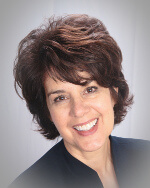|
www.HealthyHearing.com |
What to know about Deaf culture'You don’t believe you have a disability—and you don’t want to be fixed.'
Contributed by Debbie Clason, staff writer, Healthy Hearing Members of the Deaf community in America use a different language—literally. Not only does their language—American Sign Language (ASL)—connect them to others who are Deaf, it also serves as a membership card into a linguistic subculture of our society that not everyone is privileged to enjoy. Breaking down stigmas about the Deaf community
One of the ways the Deaf distinguish themselves as a culture is by capitalizing the word Deaf and working to change mainstream America’s attitude. People in the Deaf community typically don't use the word "disabled" because that word makes implies “less than”—as though they are lacking something. By removing the label, they are also removing any stigma that might be attached. “It’s about perspective,” Deaf advocate Eileen O’Banion said. “When you are Deaf, you see the world in a different way. You communicate differently. You seek out others who are Deaf because they understand you. You don’t believe you have a disability—and you don’t want to be fixed.” 'Deaf gain'Deaf gain is the concept that being a Deaf person comes with many benefits largely overlooked in our culture, such as unique capabilities in spatial and facial recognition, peripheral processing, and the detection of images, according to the authors of the 2014 book Deaf Gain: Raising the Stakes for Human Diversity. The idea is that Deaf people have more meaningful and intentional connection because they cannot hear. The importance of American Sign Language (ASL)According to the National Institute on Deafness and Other Communication Disorders (NIDCD), ASL is a complete, complex language consisting of signs made by the hands, facial expressions and body language. Additionally, the National Association of the Deaf (NAD) calls ASL the “backbone of the American Deaf culture.” “Many who are not familiar with ASL think it’s English and hand gestures,” O’Banion said. “It’s not. Signing is different between countries and regions, much like the spoken word is different between countries and regions.” The origins of sign languageWhile the origins of sign language are not clear, most agree that it began almost 200 years ago and has been evolving ever since. Like modern language, sign language has different accents, rhythms, rules for pronunciation, word order and grammar. The language is so complex, some members of Deaf culture say they can identify when a person learned ASL simply by observing the way they sign. Audism and oralismDeaf culture believes mainstream hearing America puts too much emphasis on the spoken word. They maintain ASL is a complete language. Some activists talk about audism—an attitude of superiority based on an ability to hear—and oralism—advocacy or use of the oral method of teaching Deaf students to speak. They believe that audism and oralism degrade ASL and interfere with the Deaf person’s ability to develop speech and listening skills. “Deaf culture is important because it allows individuals to be who they are,” O’Banion explained, “and live in a way that is unique to them. There’s more to a person than whether or not they can hear, so don’t just focus on their ears.” Cochlear implantsNine out of 10 Deaf infants are born to hearing parents. Many of those parents choose cochlear implant surgery as soon as they are medically able because it helps their child with speech development. But some members of the Deaf community are opposed to cochlear implant surgery—especially for infants who are born without hearing. They believe every person deserves the right to choose for themselves whether they want to remain Deaf and encourage parents to begin teaching ASL as the baby’s first language. Also, some activists believe learning language and cognitive development through ASL is a basic human right that should be protected and that choosing cochlear implants steers families away from learning ASL and embracing Deaf culture How to communicate with a Deaf personFortunately, you don’t need to know ASL in order to know how to communicate with a Deaf person. According to a tip sheet developed by the Rochester Institute of Technology—one of the country’s premiere learning institutions for the Deaf—there are five guidelines to remember when communicating with the Deaf.
More: Debbie Clason, staff writer, Healthy Hearing
|
Featured clinics near me
Earzlink Hearing Care - Reynoldsburg
7668 Slate Ridge Blvd
Reynoldsburg, OH 43068

Find a clinic
Need a hearing test but not sure which clinic to choose?
Call 1-877-872-7165 for help setting up a hearing test appointment.


 Debbie Clason holds a master's degree from Indiana University. Her impressive client list includes financial institutions, real estate developers, physicians, pharmacists and nonprofit organizations.
Debbie Clason holds a master's degree from Indiana University. Her impressive client list includes financial institutions, real estate developers, physicians, pharmacists and nonprofit organizations.